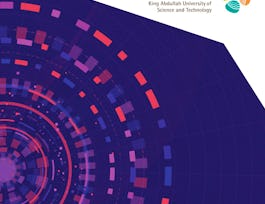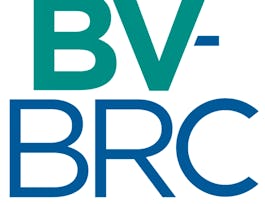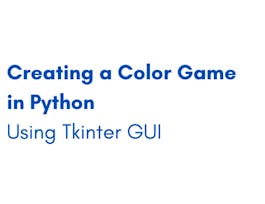A big welcome to “Bioinformatics: Introduction and Methods” from Peking University! In this MOOC you will become familiar with the concepts and computational methods in the exciting interdisciplinary field of bioinformatics and their applications in biology, the knowledge and skills in bioinformatics you acquired will help you in your future study and research.


Bioinformatics: Introduction and Methods 生物信息学: 导论与方法
Taught in Chinese (Simplified)
43,282 already enrolled
(256 reviews)
Details to know

Add to your LinkedIn profile
13 quizzes
See how employees at top companies are mastering in-demand skills


Earn a career certificate
Add this credential to your LinkedIn profile, resume, or CV
Share it on social media and in your performance review

There are 14 modules in this course
Welcome to “Bioinformatics: Introduction and Methods! Upon completion of this module you will be able to: become familiar with the essential concepts of bioinformatics; explore the history of this young area; experience how rapidly bioinformatics is growing. Our supplementary materials will give you a better understanding of the course lectures through they are not required in quizzes or exams
What's included
4 videos2 readings1 quiz
Upon completion of this module, you will be able to: describe dynamic programming based sequence alignment algorithms; differentiate between the Needleman-Wunsch algorithm for global alignment and the Smith-Waterman algorithm for local alignment; examine the principles behind gap penalty and time complexity calculation which is crucial for you to apply current bioinformatic tools in your research; experience the discovery of Smith-Waterman algorithm with Dr. Michael Waterman himself.
What's included
7 videos2 readings1 quiz
Upon completion of this module, you will be able to: become familiar with sequence databse search and most common databases; explore the algoritm behind BLAST and the evaluation of BLAST results; ajdust BLAST parameters base on your own research project.
What's included
3 videos2 readings1 quiz
Upon completion of this module, you will be able to: recognize state transitions, Markov chain and Markov models; create a hidden Markov model by yourself; make predictuions in a real biological problem with hidden Markov model.
What's included
4 videos2 readings1 quiz
Upon completion of this module, you will be able to: describe the features of NGS; associate NGS results you get with the methods for reads mapping and models for variant calling; examine pipelines in NGS data analysis; experience how real NGS data were analyzed using bioinformatic tools. This module is required before entering Module 8.
What's included
8 videos2 readings1 quiz
Upon completion of this module you will able to: describe what is variant prediction and how to carry out variant predictions; associate variant databases with your own research projects after you get a list of variants; recognize different principles behind prediction tools and know how to use tools such as SIFT, Polyphen and SAPRED according to your won scientific problem.
What's included
6 videos2 readings1 quiz
The description goes here
What's included
1 quiz
Upon completion of this module, you will be able to: describe how transcriptome data were generated; master the algorithm used in transcriptome analysis; explore how the RNA-seq data were analyzed. This module is required before entering Module 9.
What's included
5 videos2 readings1 quiz
Upon completion of this module, you will be able to: Analyze non-coding RNAs from transcriptome data; identify long noncoding RNA (lncRNA) from NGS data and predict their functions.
What's included
6 videos2 readings1 quiz
Upon completion of this module, you will be able to: define ontology and gene ontology, explore KEGG pathway databses; examine annotations in Gene Ontology; identify pathways with KOBAS and apply the pipeline to drug addition study.
What's included
8 videos2 readings1 quiz
Upon completion of this module, you will be able to describe the most important bioinformatic resources including databases and software tools; explore both centralized resources such as NCBI, EBI, UCSC genome browser and lots of individual resources; associate all your bioinformatic problems with certain resources to refer to.
What's included
6 videos1 reading1 quiz
Upon completion of this case study module, you will be able to: experience how to apply bioinformatic data, methods and analyses to study an important problem in evolutionary biology; examine how to detect and study the origination, evolution and function of species-specific new genes; create phylogenetic trees with your own data (not required) with Dr. Manyuan Long, a world-renowned pioneer and expert on new genes from University of Chicago.
What's included
5 videos2 readings1 quiz
Upon completion of this case study module, you will be able to: experience how to use bioinformatic methods to study the function and evolution of DNA methylases; share with Dr. Gang Pei, president of Tongji University and member of the Chinese Academy of Science, the experiences in scientific research and thought about MOOC.
What's included
5 videos1 reading
The description goes here
What's included
1 quiz
Instructors


Offered by
Recommended if you're interested in Health Informatics

King Abdullah University of Science and Technology

University of Virginia

University of California San Diego

Coursera Project Network
Why people choose Coursera for their career




Learner reviews
Showing 3 of 256
256 reviews
- 5 stars
65.36%
- 4 stars
21.40%
- 3 stars
6.22%
- 2 stars
3.11%
- 1 star
3.89%
New to Health Informatics? Start here.

Open new doors with Coursera Plus
Unlimited access to 7,000+ world-class courses, hands-on projects, and job-ready certificate programs - all included in your subscription
Advance your career with an online degree
Earn a degree from world-class universities - 100% online
Join over 3,400 global companies that choose Coursera for Business
Upskill your employees to excel in the digital economy
Frequently asked questions
Access to lectures and assignments depends on your type of enrollment. If you take a course in audit mode, you will be able to see most course materials for free. To access graded assignments and to earn a Certificate, you will need to purchase the Certificate experience, during or after your audit. If you don't see the audit option:
The course may not offer an audit option. You can try a Free Trial instead, or apply for Financial Aid.
The course may offer 'Full Course, No Certificate' instead. This option lets you see all course materials, submit required assessments, and get a final grade. This also means that you will not be able to purchase a Certificate experience.
When you purchase a Certificate you get access to all course materials, including graded assignments. Upon completing the course, your electronic Certificate will be added to your Accomplishments page - from there, you can print your Certificate or add it to your LinkedIn profile. If you only want to read and view the course content, you can audit the course for free.
You will be eligible for a full refund until two weeks after your payment date, or (for courses that have just launched) until two weeks after the first session of the course begins, whichever is later. You cannot receive a refund once you’ve earned a Course Certificate, even if you complete the course within the two-week refund period. See our full refund policy.


